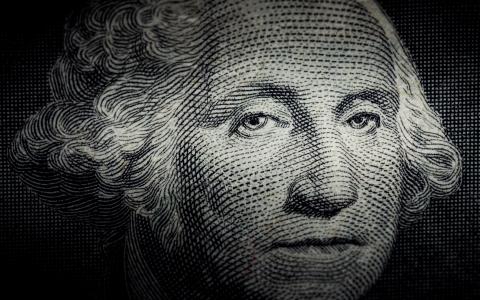
A once-reliable indicator of future recessions may be broken.
The metric in question is the so-called treasury yield-curve which measures the difference in the cost of the government borrowing for two years and the cost of the government borrowing for 10 years.
In the past, when the two-year interest rate on U.S. Treasuries was higher than the 10-year rate on U.S.
Treasuries, then we could reliably expect a recession in short order.
Not so much anymore, because recent actions by the Fed may have broken the indicator, according to one analyst.
The thing that economists look for when studying the yield curve is a so-called inversion.
That occurs when the two-year yield is higher than the 10-year yield.
A different way of looking at the same thing is to watch to see when the difference between the yields is negative.
The chart below shows that when the difference between the rates is less than zero a recession follows shortly after that.
U.S. Treasury Yield CurveFEDERAL RESERVE BANK OF ST. LOUIS
The chart shows that the yield differential is currently headed down and is getting close to zero and hence getting close to turning negative.
A recent report from Chicago-based wealth management company Cresset Wealth Advisors made the following comment:
Worried about the ominous implications of a yield curve inversion, President Trump attacked the Fed’s independence on Twitter recently, writing that he was “not happy” with the FOMC’s planned rate hikes.
In other words, the President doesn't want the Fed to raise short-term interest rates for fear that the yield curve will invert and hence augur in a recession.
Just to be clear, recessions just before a presidential election aren't good for incumbents.
However, in this case, there may be little to worry about.
That's because the interest rates on U.S government bonds have been so heavily distorted by the Fed's efforts to help the economy recover from the financial crisis of 2008-2009.
During the years after the crisis, the Fed engaged in a multi-trillion dollar bond-buying program known as the quantitative easing. That effort pushed interest rates down to record low levels, levels that may not have been reached without the interference of the Fed.
The Cresset report continues:
The yield curve is distorted and will likely not continue to be the reliable economic forecasting tool it once was, thanks to overbearing central bank influence.
In other words, the Fed's efforts may mean that reading anything into the yield curve is meaningless because the yields have been so influenced by government policy that they no longer say anything much about the economy.
More from Cresset:
Our bottom line is that a yield curve inversion, were it to occur, would prompt ominous headlines but would not be a recession signal.
In other words, stop worrying about the yield curve.
In an aside, the Cresset report seems to call for the end to central bank intervention in the U.S treasury markets.
"Let’s get the central banks out of the bond markets. Yields are too low," the report says.
Whether or not the yield curve ends up being a good predictor of the next recession or not, the last point about needing the Fed to leave the bond market seems to make a whole lot of sense.




